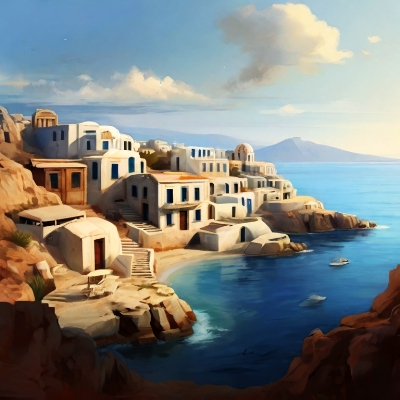Greece's Fokida Prefecture is a tapestry woven with diverse climates, unveiling an alluring blend of experiences for the intrepid traveler. Dive into the weather dynamics of this mesmerizing region, where every season paints a unique portrait of beauty
Weather Overview
Fokida's climate dances between Mediterranean bliss and mountainous allure, offering a spectrum of experiences. Coastal areas bask in the Mediterranean climate, blessed with mild, wet winters and dry, sun-soaked summers. As you venture inland, the landscape transforms, embracing a cooler climate with mountainous terrains painting a picturesque backdrop.
Amfissa City: Weather Highlights
The capital, Amfissa City, mirrors Fokida's fascinating weather tapestry. Summers bring warmth and sunshine, ideal for exploring the city's historical gems. Expect temperatures hovering around 30°C (86°F), perfect for delving into ancient ruins or savoring local delicacies in open-air cafes. Winters, while mild, can be wet, inviting a different charm to the city's ambiance.
Best Time to Visit
For sun-worshippers and culture enthusiasts, late spring to early autumn (May to September) casts a magical spell over Fokida. These months weave a canvas of warmth and vibrancy, inviting you to explore its beaches, historic sites, and vibrant local festivals.
When to Avoid Traveling
Winter, particularly December to February, may not suit everyone's taste. While the temperatures remain mild, rainfall is more frequent, and some tourist attractions might have limited accessibility or hours.

In Conclusio
Fokida, with its amalgamation of climates and landscapes, promises an odyssey for the senses. Whether you seek sun-kissed shores, ancient history, or a rendezvous with nature's tranquility, Fokida beckons. Embrace the magic of this Greek gem, where every season narrates a captivating tale of its own.